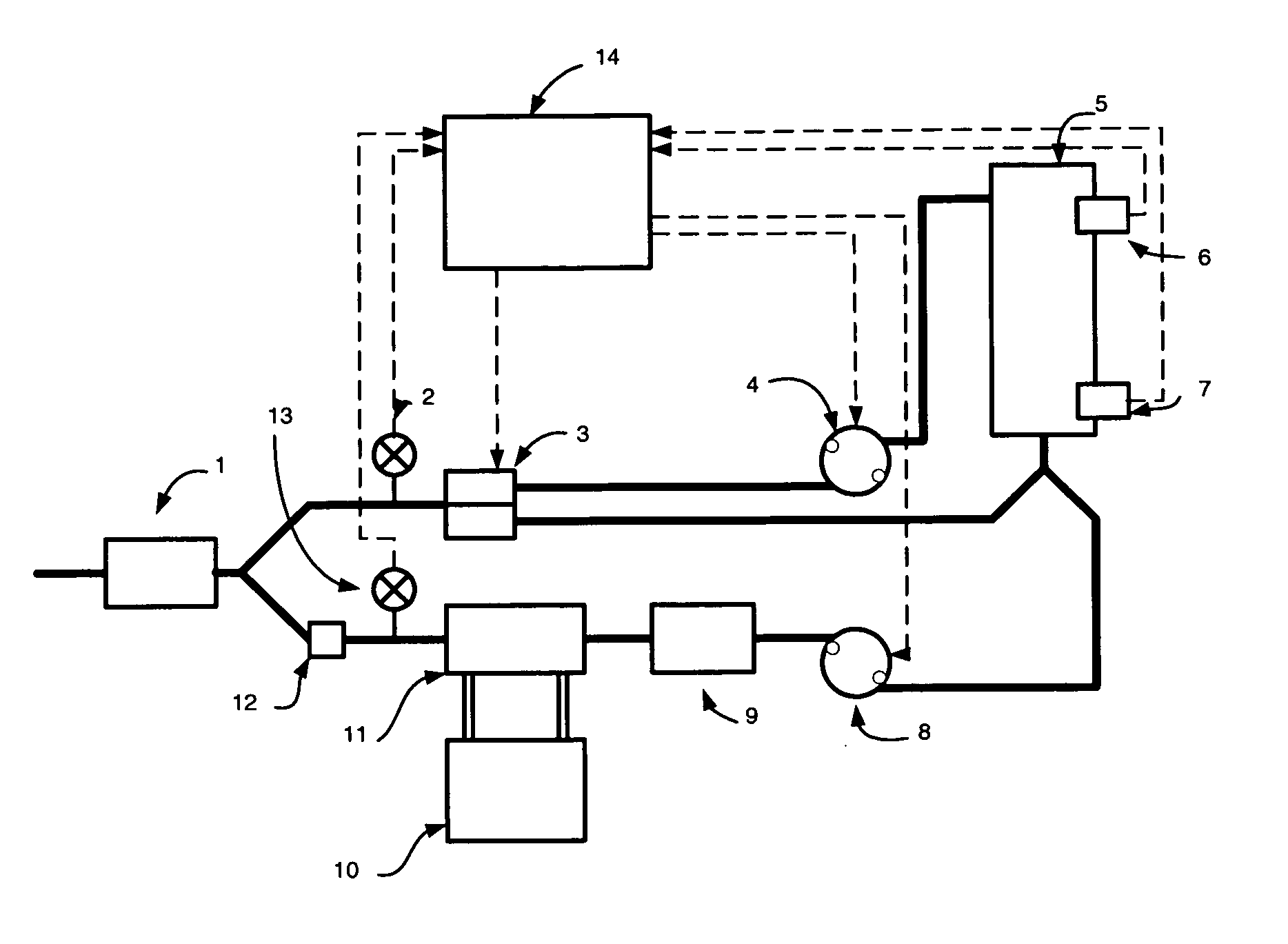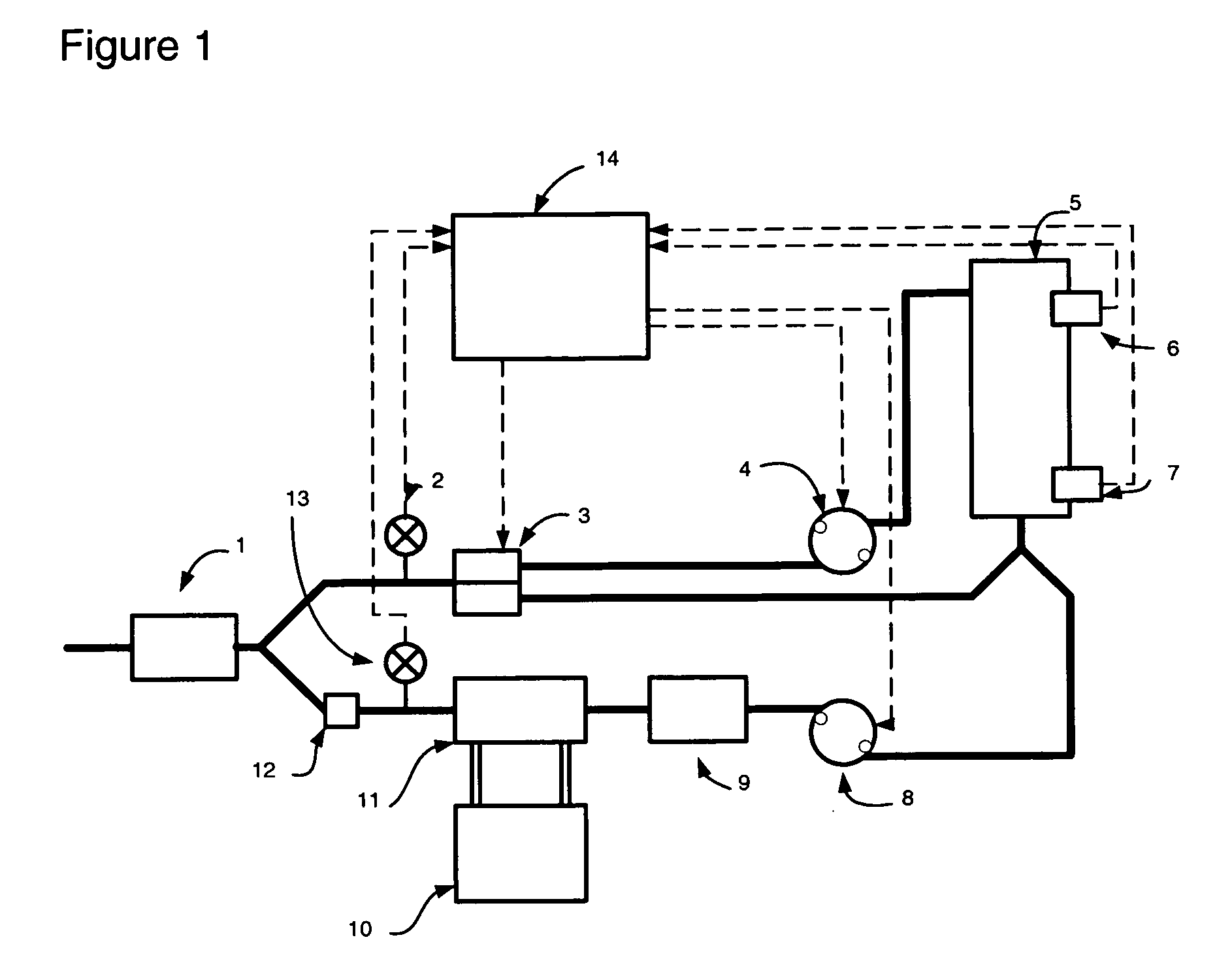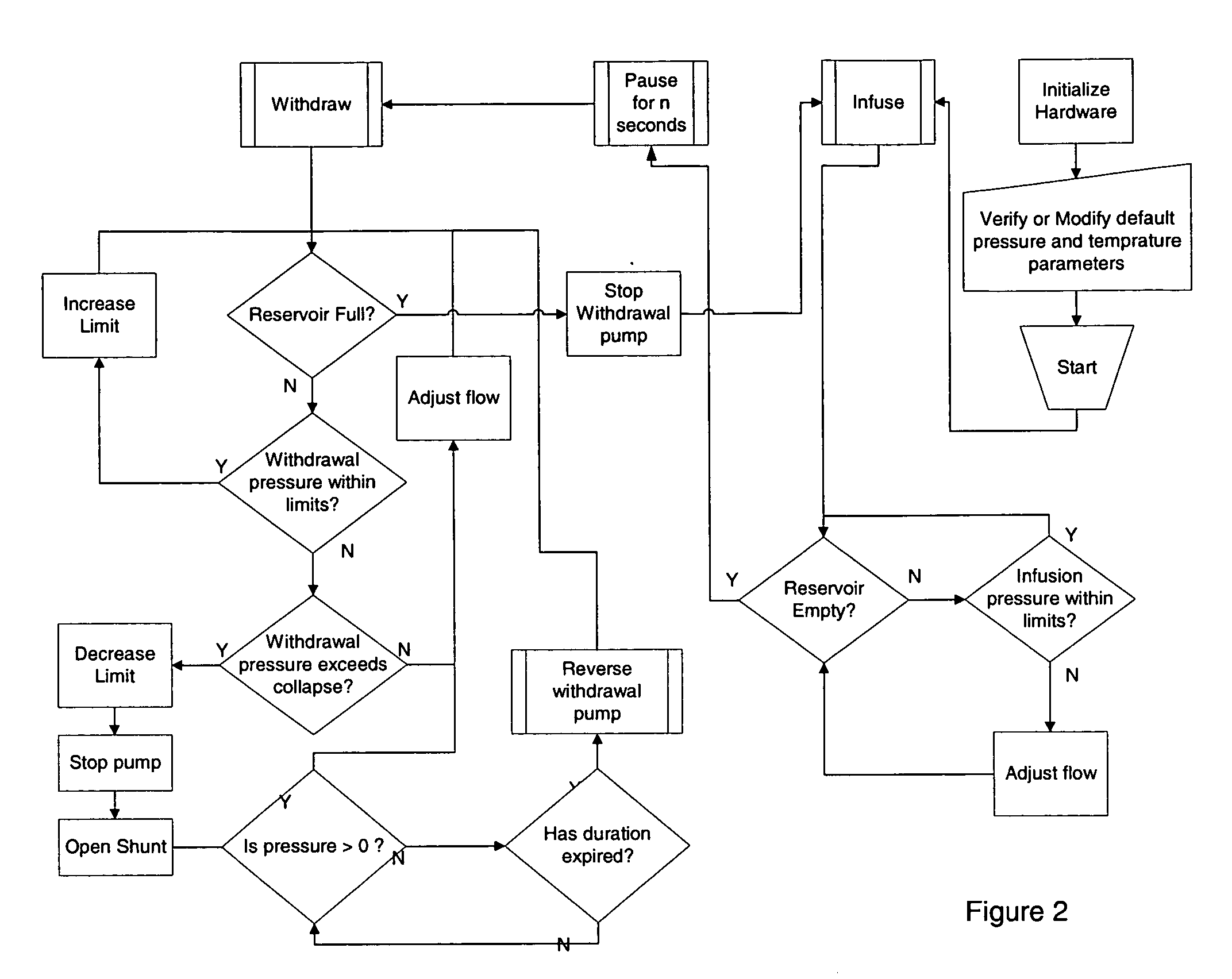Hypothermia induction device
a technology of induction device and hypothermia, which is applied in the direction of contraceptive devices, wound drains, other medical devices, etc., can solve the problems of not providing a solution for vessel collapse during withdrawal, no prior art describes a system that uses only one vein access to extracorporeally cool blood, and no method to solve vessel collapse during withdrawal. , to achieve the effect of rapid cooling of the heart and brain, reducing brain damage, and increasing the likelihood of survival
- Summary
- Abstract
- Description
- Claims
- Application Information
AI Technical Summary
Benefits of technology
Problems solved by technology
Method used
Image
Examples
Embodiment Construction
[0018] A blood recirculating apparatus has been developed that uses a single venous access. This apparatus provides a blood recirculating apparatus that can quickly cool the heart and brain of patients in both cardiac arrest and normal circulation. The apparatus may be used for continuously treating blood by dialysis, ultra-filtration, oxygenation and / or cell removal concomitant to cooling or without cooling.
[0019] A method has been developed to maximize blood withdrawal rate by using a controller that can be based on a microprocessor. The method provides a technique to overcome blood vessel collapse during blood withdrawal. This method comprises of stopping the withdrawal pump and employing a shunt between the blood reservoir and the withdrawal line thus relieving the vacuum in the line. If, after a predetermined time, the vacuum does not dissipate, the shunt is closed and the withdrawal pump is operated in the reverse direction yielding flow of blood via the collapsed vessel. The...
PUM
 Login to View More
Login to View More Abstract
Description
Claims
Application Information
 Login to View More
Login to View More - R&D
- Intellectual Property
- Life Sciences
- Materials
- Tech Scout
- Unparalleled Data Quality
- Higher Quality Content
- 60% Fewer Hallucinations
Browse by: Latest US Patents, China's latest patents, Technical Efficacy Thesaurus, Application Domain, Technology Topic, Popular Technical Reports.
© 2025 PatSnap. All rights reserved.Legal|Privacy policy|Modern Slavery Act Transparency Statement|Sitemap|About US| Contact US: help@patsnap.com



